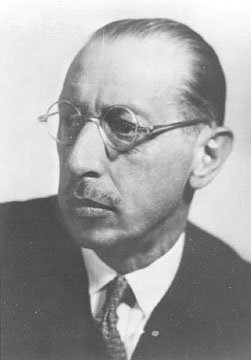Five more for Igor
 NEC is having a Stravinsky brouhaha to try and match our Webern festivus. Except they're doing Firebird with choreography so I guess they win. But what interested me was the intriguingly title gem (i.e. free concert) "Rarely-Performed Masterworks". Now I don't know much about Stravinsky, embarassingly little outside the big three "Russian" period ballets, but I felt like a had a bit of street cred for having heard one of these masterworks. Or maybe the performers should having known to perform it? meta meta meta......
NEC is having a Stravinsky brouhaha to try and match our Webern festivus. Except they're doing Firebird with choreography so I guess they win. But what interested me was the intriguingly title gem (i.e. free concert) "Rarely-Performed Masterworks". Now I don't know much about Stravinsky, embarassingly little outside the big three "Russian" period ballets, but I felt like a had a bit of street cred for having heard one of these masterworks. Or maybe the performers should having known to perform it? meta meta meta......
The program provided deep cuts from all these of the official Stravinsky period, the first Russian (or "primal" for the less educated types) period was represented by his Three Pieces for String Quartet of 1914. It is well noted that they aren't grouped under some more binding term, like "suite" or "string quartet", since the bracing rhythms of the Dance were as far away from the glassy chords of the Canticle as anything else on the program.
The balance of the first half jumped to his late serialist period. I had already heard the Three Songs of Shakespeare, but this quartet provided a much more interpretative and dedicated performance. As opposed to the twelve-tone rows favored by the Viennese gentleman, the three song are based on four, five, and seven-tone rows respectively. I had missed the subtle move from quasi-modal to the atonal kaliedoscope before, but the performered shifted their tone to accentuate it. And thank the Jeebus the soprano knew what she was talking about this time.
Its companion piece, In memorium Dylan Thomas, was at turns bombastic and hushed (really your only options with four trombones). I can't suppose whether Stravinsky was devastated or merely bummed at missing the chance to work with Thomas, but he uses the system to great effect. While stopping short of grief, the canon of trombones exuded a guarded respect.
A Lee Hyla piece Amnesia Breaks was offered as a sort of intermezzo before the intermission. It could've stomped pretty hard, but I couldn't tell. The performance was either totally phoned it or embodied everything we have come to fear about conservatory playing. Glued to the page, refusal to get violent and charging through the tender parts, it was a mess.
The second half promised to larger-scale works from Stravinsky's neo-classical period, which is sort of a vacuous hole in my knowledge. The chamber orchestra's Concerto In D was a masterstroke, it really does sound like Haydn if he had the chance to hear the next hundred years of music. My personal favorite comes in the second movement, the violins are gifted a pretty if somewhat pedantic melody. But that's not enough, they want to get fancy. Like the jerky string players they are they get more and more lost before just stopping, luckily the violas and cellos lay down a big V-I and everything starts over again. It isn't Haydn without jokes.
In lieu of program notes John Heiss, the director of NEC's Contemporary Ensemble, spoke briefly before several of the pieces. I liked how this opened up the flow of the concert a bit, Jordan Hall always seems to be a more relaxed and artistic place than Symphony Hall, but provided the chance for an "ah-ha" moment normally regulated to lectures and magic shows. Before closing with Stravinsky's Mass, he brought us back to those crystalline chords in the string quartet at the beginning of the concert. When asked why they were there, Stravinsky responded "The cantors need time to swing the incense." It was a cool moment.
This moment was ruined, the Mass is a godawful piece. Nevermind the lackluster Bach consort or the poor blending from the Chamber Singers, the piece is bad. I can think of no other way to describe it other than it sounds as though it was written for high school choir. Some things are rarely heard because they were ahead of the curve or circumstance caused them to slip through the crack, but sometimes it is because it isn't very good. One neat thing I managed to glean from it was its continuation of the Palestrina tradition of homophony when you really need to hear the words. The machine gun-like pace of the Credo may have been meant to play behind interesting figures in the winds, but the winds certainly weren't making it sound like that. One brief glimmer of brillance came at the end of the Credo, after the aforementioned march the Amen blossomed into what seemed to be infinite shards of tradition. That might have just been by comparison.
Stravinsky certainly has his pedestal, George Perle said that when Stravinsky died that the world was without a great composer for the first time in six hundred years. (Josquin? Really?) As I type this I'm staring down a copy of Igor's Poetics of Music on loan from a friend that I didn't read in time but wish I had. For a composer whose main fame with the populace caused a riot, seeing these smaller works brings out an appreciable side of a figure that will likely only grow more inaccessible with time. But don't take this as a suggestion that we should start trotting out Beethoven's Scottish songs and mandolin variations.
Photo from nndb.com



4 comments:
In a sense, the Mass was kind of written for a high school choir, or at least a volunteer church choir—Stravinsky fully intended it to be used in services. Probably works better that way, but nobody much does the full-out sing-the-latin-bits Catholic Mass anymore, so it's hard to tell. (Full disclousure: I actually love the Mass, although I may have been biased by singing it before I had ever heard it. From the inside out, it's pretty cool.)
I had a bad feeling about getting the knives out, but I told myself that no one got anywhere from pussyfooting. John Heiss actually mentioned the Mass's intentions as such, but since the course I'm TA'ing for just got out of Palestrina and Victoria my ideas of what a church choir can do are perhaps at little dated. (Much less Gesualdo, whew!)
I stand by my assessment of the performance as lackluster at best, but I'll investigate a recording (especially if you have suggestions) and listen with a open mind/heart. Also, wasn't there a church around here that did a full-out Machaut Mass recently, or maybe in the past coupla years?
Well, we're spoiled here in Boston as to church choirs—nearly everybody's got one, and they do occasionally break out the old rites and integrate them into the service. (I mean, Emmanuel still does a Bach cantata every Sunday, which is just mind-boggling.) By comparison, when I lived in Chicago, I never heard of a choral mass being sung at a liturgy. Ever. (New Yorkers can head over to St. Thomas 5th Ave. and probably others I don't know about.)
As for a recording of the Mass, I'm not sure.... I heard one once that was either Stravinsky or Craft conducting (hard to tell them apart sometimes) and it was pretty by-the-numbers. I'll poke around the next time I think of it, though—there's probably some Scandanavian choir out there that just sings the hell out of it. And you may very well still hate it. Stravinsky's like that: I mean, every fiber in my being is predisposed to like Oedipus Rex but my attention invariably wanders. I still give it a chance every few years, though. ("It's Cocteau! I must like it!")
Anyone know where in Boston you can hear an old style Latin mass with the sung liturgy etc? Would be interested in finding out. Tony
Post a Comment